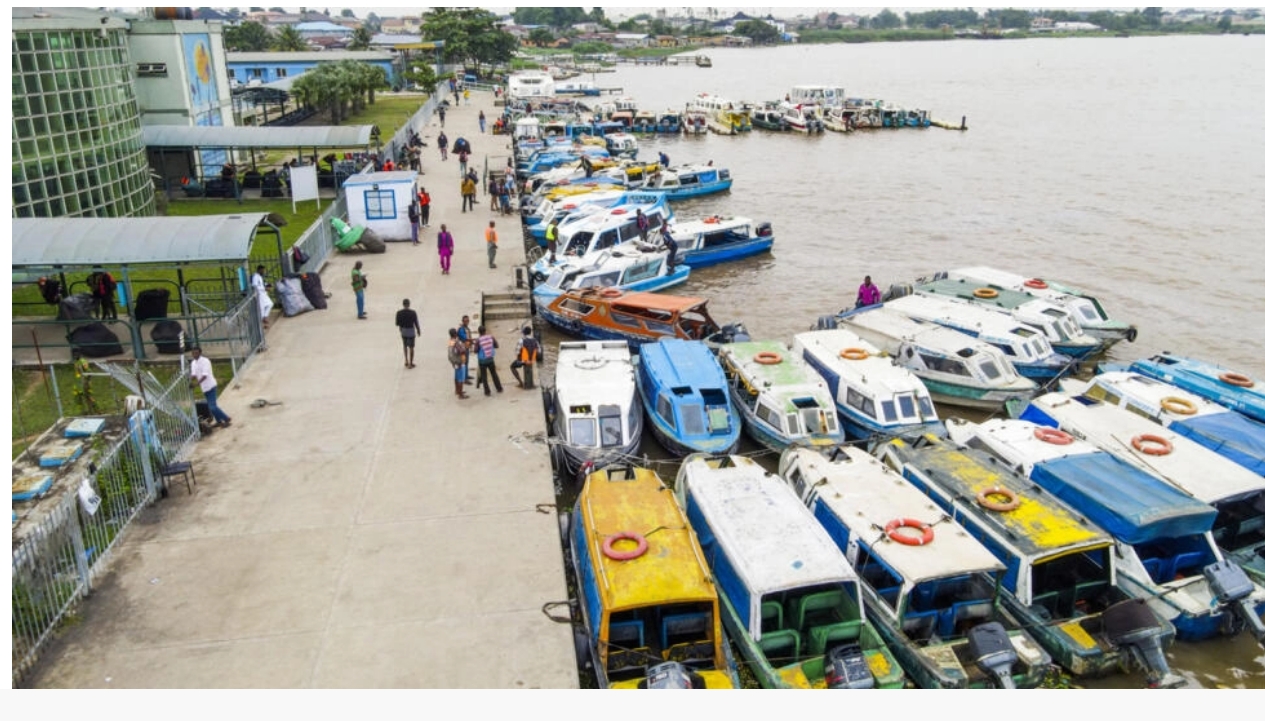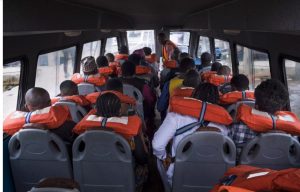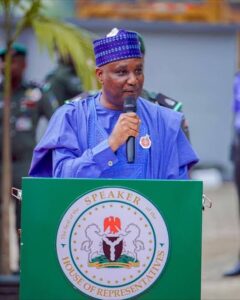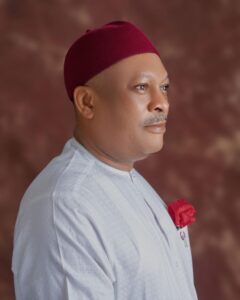
It used to be a three-hour nightmare commute to work, with rough traffic and an early start, but these days it’s just a quick boat ride across the waters of Lagos Lagoon.
“You truly have the ability to get out of bed when necessary. The telecom employee said, “You have breakfast at home, strut in here, strut into the boat, and cross the water in thirty minutes.”
“It’s really a life-saving situation for most of us.”
Lagos, the economic hub of Nigeria, is surrounded by the Atlantic Ocean and lagoon waters. For a long time, residents of the megacity have chosen to avoid the congested roads by using the waterways.
But soon more commuters like Junaid in the city of 20 million could be travelling by boat under plans to massively expand waterway transport and multiply passenger numbers.
With an around 410-million-euro ($455-million) investment from France’s AFD development agency and EU institutions, the progamme — known as Omi Eko or Lagos Water in Yoruba language — also aims to tackle carbon emissions with a fleet of electric-powered ferries.
Whereas most Lagosians live on the mainland part of the city, a lot of offices and workplaces are on the islands area — Victory Island, Ikoyi, Lagos Island and Lekki — linked by a series of bridges.

That means road traffic to the islands in the morning and back to the mainland after work can be heavy going. Even a small accident on a bridge or repair work can cause miles of tailback.
Bad roads and flooding during the rainy season coupled with the chaotic fleets of informal “Danfo” minibuses that pack the roads compound the difficulties.
As Lagos rapidly approaches its goal of becoming the most populous city in the world by the end of the century, the state government has already formulated ambitious plans for more integrated public transport.
Reducing traffic is the goal of dedicated bus lanes and intracity trainlines that are fed by smaller minibus routes.
However, it wasn’t until last year that the first Blue Line train finally began operating from a portion of the mainland, following years of delays. There will soon be another Red Line opening.
Boat transport, on the other hand, is a clear solution given the surrounding water, and the project’s backers think it could be implemented similarly in Cameroon and the Ivory Coast.
“We have viewed the waterways as the potential jewel in the crown to ensure we can unlock the traffic we see on the roads,” Head of the Department of Lagos State Waterways Authority, Oluwadamilola Emmanuel, told AFP.
Transport and its costs are a major problem for Lagosians.
Nigeria faces its worst cost-of-living crisis in decades, with inflation at more than 30 percent and fuel costs more than triple the price of 18 months ago after government reforms.
That can mean a lot in a country where half the 200-million population lives in some form of poverty and where the minimum monthly wage is 70,000 naira or $46.
Nigerians have adapted. Some drive less, use public transport or work more from home. For Lagos boat operators, it often means cutting back to a single one-way trip a day.
Transport expert Samuel Odewumi at Lagos State University says the current Lagos administration will have to ensure the new development is sustainable.
“There are no cons, there are pros and pros for Lagos state with water transport,” he said. “But over the years it has been in fits and starts.”
Other problems such as dredging, fuel prices, jetty and boat quality and safety will need to be tackled, he said.
Inland waterways offered a clear solution to the congested Lagos road network and a means of connecting locations throughout the city for the French organization AFD, which was already collaborating with Lagos on bus systems.
The project intends to upgrade the jetty system and dredge routes, as well as develop 15 ferry routes with over 75 electric vessels over the next three years.
The vessels at jetties will be refueled by compressed natural gas generators and solar infrastructure, which will help the city overcome its weak power grid.
David Margonsztern, head of AFD’s transport projects, told AFP, “We already know that other countries are looking very closely at what we’re doing with this project.”
Waterways authority chief Emmanuel hopes the project will increase boat passengers from around two percent of total commuters now to around 10 percent.
“We will be moving about 10 million people on a monthly basis,” he said.
Cost and fear of water are concerns for many.
For first time boat rider Adeyemi Jagbojagbo, a driver, the novelty of arriving at a ferry terminal provided relief from the traffic but he was still unsure he would do it again.
“This is my first time, I’m so scared, like the way the boat was doing,” he said. “So I just pray maybe I should come back.”
AFP







